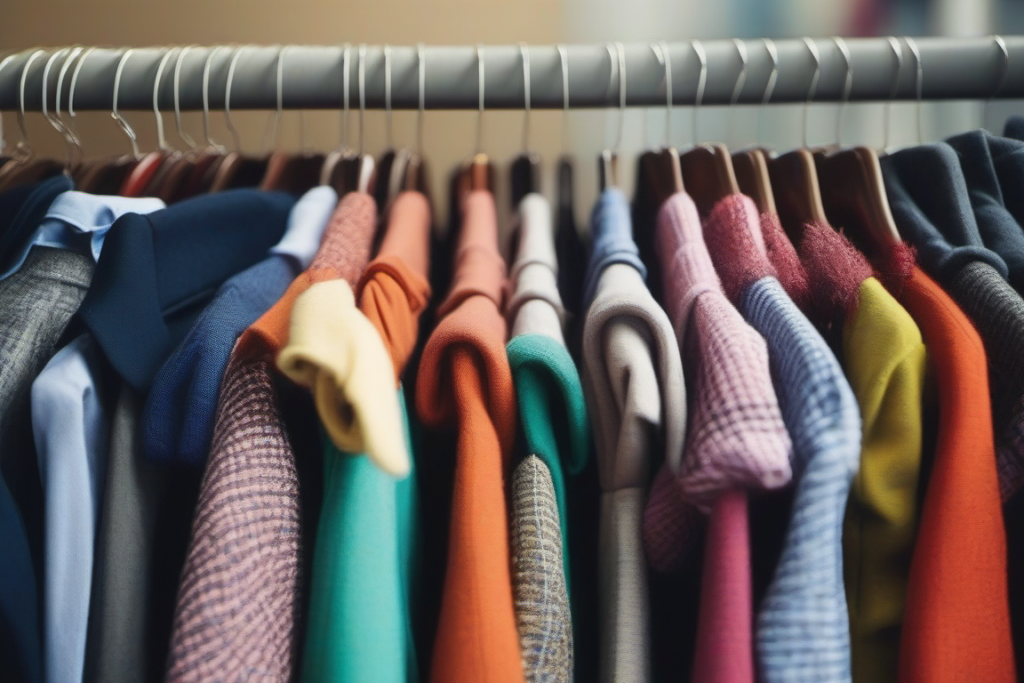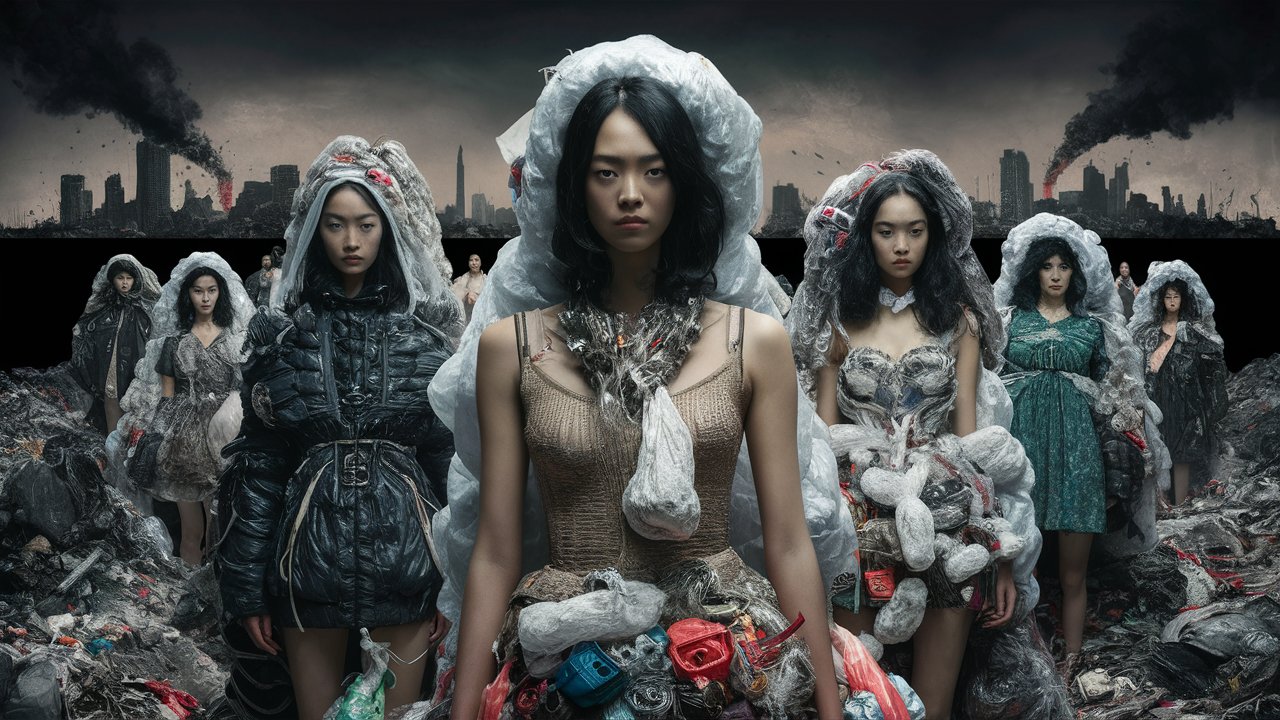The Dark Side of the Fashion Industry
The fashion industry is one of the most polluting industries in the world, with fast fashion being a significant contributor to environmental degradation. That is why it is important to spread awareness about The Impact of Fast Fashion on the Environment. Fast fashion refers to the rapid production and consumption of cheap clothing, which has become a staple of modern fashion. However, the convenience and affordability of fast fashion come at a significant cost to the environment.
The Environmental Impact of Fast Fashion
Water Pollution: The production of synthetic fabrics requires massive amounts of water, which often leads to water pollution. For example, the production of polyester requires the use of harmful chemicals, which can contaminate water sources.
Carbon Footprint: Fast fashion requires rapid transportation of goods, which contributes to greenhouse gas emissions. The carbon footprint of the fashion industry is estimated to be around 10% of global emissions.
Waste and Textile Pollution: Fast fashion encourages a “throwaway” culture, resulting in massive amounts of waste. The average American generates 82 pounds of textile waste per year.
The Impact of Fast Fashion on the Environment: Facts and Stats
The fashion industry produces over 12% of global greenhouse gas emissions.
The average garment is worn only 7 times before being discarded.
The fashion industry uses over 1.5 trillion liters of water annually.
Examples of Sustainable Fashion Practices

Patagonia: Uses environmentally-friendly materials and practices, such as recycling and upcycling.
Reformation: Prioritizes sustainability through energy-efficient practices and sustainable materials.
ThredUp: Encourages second-hand shopping and recycling of clothing.
What Can You Do?

Buy Second-Hand: Purchasing second-hand clothing reduces the demand for new, resource-intensive garments.
Become a Wardrobe Curator, Not a Collector:
- Quality Over Quantity: Shift your mindset. Instead of chasing trends, invest in timeless, well-made pieces that will become staples in your closet. Look for classic cuts, neutral colors, and versatile styles you can mix and match. Consider cost-per-wear: a higher-quality item that lasts for years is ultimately more economical than constantly replacing cheap clothes.
- Prioritize Durability: Natural fibers like organic cotton, linen, and hemp are not only comfortable but also more durable than synthetic fabrics. Look for clothes with reinforced seams, strong buttons, and high-quality zippers.
- Embrace Versatility: Invest in pieces that can be dressed up or down. A classic blazer can take you from work to a night out, while a well-fitting pair of jeans pairs perfectly with a casual top or a dressy blouse.
Shop Secondhand Like a Pro:
- Treasure Hunt: Thrift stores, consignment shops, and online platforms like ThredUp and Poshmark are goldmines for unique and affordable finds. You might unearth a designer gem for a fraction of the original price!
- Know Your Brands: Do your research! Some thrift stores have dedicated sections for high-end brands. Familiarize yourself with quality labels to identify hidden treasures.
- Look Beyond Perfection: Don’t be afraid of minor imperfections. A small tear can be easily mended, adding a touch of personal style to your garment.
Support Sustainable Brands:
- Do Your Research: Not all brands claiming to be sustainable are created equal. Look for certifications like GOTS (Global Organic Textile Standard) or Fairtrade to ensure ethical and environmentally responsible practices.
- Transparency is Key: Support brands that are transparent about their supply chain and production processes. Look for information on the materials they use, where their clothes are made, and their labor practices.
- Think Local: Consider shopping from smaller, local brands that prioritize sustainable practices and use eco-friendly materials. This not only reduces your carbon footprint but also supports your community.
Give Your Clothes New Life:
- Mending Magic: Learn basic sewing skills! A simple stitch can fix rips or tears, extending the life of your clothes. There are tons of online tutorials and resources to get you started.
- Get Creative: Upcycle your old clothes! Turn a worn-out t-shirt into a tote bag or a pair of ripped jeans into stylish shorts. The possibilities are endless!
- Organize Clothing Swaps: Get your friends involved! Host clothing swaps where you can exchange unwanted items for something new (to you!). It’s a fun and sustainable way to refresh your wardrobe.
Wash Sustainably:
- Less is More: Don’t wash clothes after every wear. Spot clean small stains and air-dry clothes whenever possible. This reduces energy and water consumption significantly.
- Cold Water Warrior: Washing clothes in cold water uses less energy than hot water. It also helps preserve the color and quality of your garments.
- Eco-Friendly Detergents: Choose detergents that are free of harsh chemicals and are biodegradable. Look for concentrated formulas that require less product per wash.
Be a Voice for Change:
- Spread Awareness: Talk to your friends and family about the environmental impact of fast fashion. Educate them about sustainable alternatives and encourage them to join the eco-conscious movement.
- Support Sustainable Legislation: Stay informed about policies aimed at regulating the fashion industry and advocate for sustainable practices.
- Use Your Social Media Power: Share your eco-conscious fashion journey on social media! Use inspiring hashtags and show the world that style and sustainability can go hand-in-hand.
Conclusion
The impact of fast fashion on the environment is significant, but there are ways to make a positive change. By adopting sustainable fashion practices, we can reduce waste, conserve resources, and promote environmentally-friendly fashion. Remember, fashion can be both stylish and sustainable!


Comment